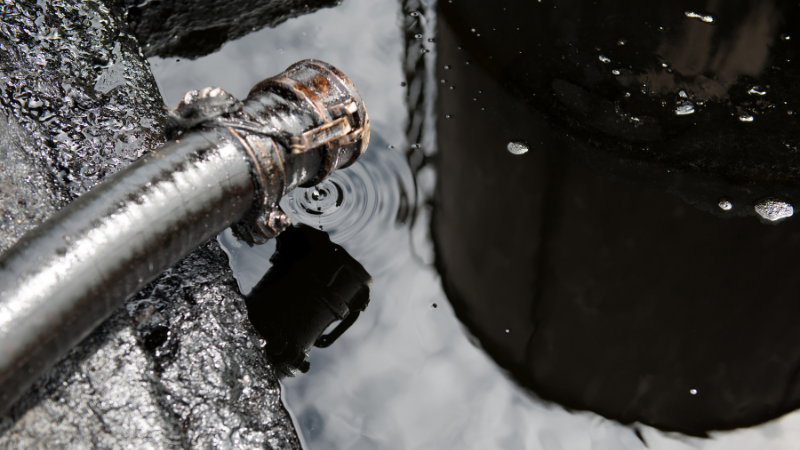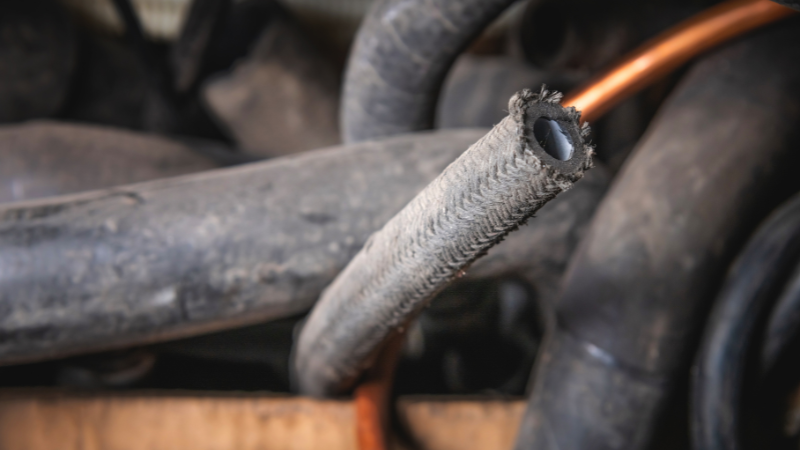How To Repair A Hydraulic RAM
August 11, 2023

Hydraulic systems play a pivotal role in a range of different industries, powering heavy machinery and equipment with their incredible strength and efficiency.
At the heart of these systems lies the hydraulic ram, a vital component in the system that is responsible for converting hydraulic pressure into mechanical force.
However, like all mechanical systems, hydraulic rams are not immune to wear and tear, which can lead to malfunctions over time.
In this guide, we will walk you through the step-by-step process of repairing a hydraulic ram, ensuring that your machinery continues to operate smoothly.
Understanding the Hydraulic Ram
Before delving into the repair process, it’s important to have a basic understanding of how a hydraulic ram works. A hydraulic ram operates based on the principles of fluid dynamics and the conservation of energy.
When hydraulic fluid, usually oil, is pumped into the cylinder of the ram, it builds up pressure which causes a piston to move and generate force. This force is then used to perform various tasks, such as lifting, pushing, or compressing.
Tools and Safety Precautions
Repairing a hydraulic ram requires specific tools and safety precautions to ensure the process is carried out safely and effectively. One such tool would be a wrench or a spanner to make sure that you can disassemble and reassemble the hydraulic ram components.
It may also be rather useful to have a set of sockets to remove any nuts and bolts that you may come across as well as some pliers to grip the smaller parts of your system.
You may also need to wear some kind of safety equipment such as gloves or safety goggles, as well as the appropriate clothing to protect against potential leaks, spills, and other hazards.
Safety Precautions
Before attempting any repairs, ensure that the hydraulic system is depressurised and disconnected from its power source. This minimises the risk of accidents during the repair process.
When attempting to make any kind of repairs, the safety of the process is of vital importance, this is why you must complete safety checks and take caution when undertaking such difficult tasks.
Inspection
Examine the hydraulic ram thoroughly to identify the cause of the malfunction. Common issues include worn-out seals, damaged cylinders, or leaking fluid. This initial assessment will help you determine the extent of the repair required.
Disassembly
Carefully dismantle the hydraulic ram, following the manufacturer’s guidelines if available. Begin by removing any retaining pins, bolts, or fasteners that hold the components together. Take pictures or make notes as you disassemble to aid in reassembly.
It is important that you disassemble all of your equipment with extreme caution to make sure that you do not cause further damage to your hydraulic system as this could result in more repairs or permanent damage.
Seal Replacement
Worn or damaged seals are a common cause of hydraulic ram issues. That is why you should check your seals regularly to make sure you can fix the issue quickly. If they do need replacing, you should, gently remove the old seals using pliers or a seal pick. Clean the seal grooves thoroughly to ensure proper seating of the new seals. Install the new seals according to the seal kit instructions, ensuring they are properly lubricated.
Cylinder Inspection
Inspect the cylinder for any signs of corrosion, pitting, or scoring. If the cylinder is damaged beyond repair, replacement may be necessary. If the damage is minor, it might be possible to polish the cylinder using fine-grit sandpaper or a honing tool.
Piston and Rod Examination
Check the piston and rod for signs of wear, bending, or damage. If the piston or rod is compromised, it will need to be replaced. Ensure that the replacement components match the specifications of the original parts.
Reassembly
Carefully reassemble the hydraulic ram in the reverse order of disassembly. Follow the manufacturer’s guidelines for torque specifications when tightening nuts and bolts. Use new fasteners if the old ones show signs of wear or damage.
This stage is a vital part of the process as this is the state your hydraulic RAM will be in for the foreseeable future.
Fluid Replacement and Testing
Before reconnecting the hydraulic ram to the system, check the hydraulic fluid level and condition. If the fluid is contaminated or old, drain and replace it.
Reconnect the hydraulic ram to the system and gradually pressurise it. Check for leaks and ensure smooth operation of the piston by cycling the ram a few times.
Final Checks
After repairing the hydraulic ram, monitor its performance over a period of time. Pay attention to any unusual noises, leaks, or changes in operation. Conduct regular maintenance to prolong the life of the ram and prevent future issues.
These final checks will allow you to locate any final issues in your system before you cease your repairs. This step is imperative to the long-term health of your hydraulic RAM to make sure that you have not missed anything that may develop into a serious problem later on.
Professional Hydraulic Ram Repair
Repairing a hydraulic ram might seem daunting, but with the right tools, knowledge, and precautions, it’s a task that can be successfully accomplished.
Remember that safety is paramount throughout the process, and if you’re unsure about any aspect of the repair, it’s wise to consult with a professional or enlist the assistance of an expert.
By following the steps outlined in this guide, you’ll be able to restore the functionality of your hydraulic ram and keep your machinery operating at its best.
Regular maintenance and timely repairs will ensure that your hydraulic system continues to provide reliable and efficient performance for years to come. This will simultaneously remove the need for any kind of replacement services in the future.
In conclusion, a hydraulic ram is a vital component of many industrial processes, enabling the conversion of hydraulic pressure into mechanical force.
With proper maintenance and repairs, you can extend the lifespan of your hydraulic ram, ensuring that it performs optimally and contributes to the smooth operation of your machinery.
By following the detailed repair guide outlined above, you’ll be equipped with the knowledge and tools to tackle hydraulic ram issues confidently and effectively.
Remember, a well-maintained hydraulic system not only enhances productivity but also minimises downtime and repair costs, making it a valuable investment for any industry that relies on heavy machinery.

Jack is the proud new owner of Pirtek Wirral. After taking over the franchise in early 2023, Jack’s leadership has already led to Pirtek Wirral winning national awards. With his expertise in all hydraulic systems, Jack is passionate to grow Pirtek Wirral into a leading franchise.
Have Any Questions?
Get in touch with our team today.
- 0151 725 6777
- help@dynamichydro.co.uk




